The Electronic Intifada 1 October 2019

Wadi Qana is considered one of the most beautiful natural areas in the occupied West Bank.
It is an important nature reserve boasting both fauna and flora. With its numerous springs, the valley has historically served agricultural and recreational purposes for Palestinians who live in the area, mainly from the adjacent village of Deir Istiya in the northwestern region of the West Bank.
The growth of Israeli settlements brought dramatic changes, starting in the late 1970s. Until the 1990s, almost 50 Palestinian families, around 350 people, lived in the valley. They started to leave for Deir Istiya because of water pollution.
Israel declared Wadi Qana to be an Israeli nature reserve in 1983. They called it Nahal Qana Reserve, an area of nearly 3,500 acres, and placed it under the authority of four Israeli governing entities, including the settlement of Karnei Shomron and the Civil Administration, the bureaucratic arm of Israel’s military occupation.
Palestinians, who have been working in the valley for generations, face increasing Israeli restrictions on their farming and grazing practices. Today, they cannot develop their infrastructure, except to tend some seasonal crops.
The construction of Israel’s wall poses a further threat to Palestinian farmers. According to UN maps, Wadi Qana will be left on the western side of the wall, and de facto annexed to Israel, separating landowners in Deir Istiya village from the valley.
Saed Zeadan, the head of Deir Istiya municipality, told The Electronic Intifada that he was worried about the future.
“For the wall as it is planned, I think this is going to happen: At the beginning, they will put a gate and a system of permits, then after some time, we will not be able to go [to our agricultural land].”
Anne Paq is a French freelance photographer and member of the photography collective ActiveStills.
Ahmad Al-Bazz is a multi-award winning journalist, photographer and documentary filmmaker based in Nablus, and a member of the photo collective ActiveStills.
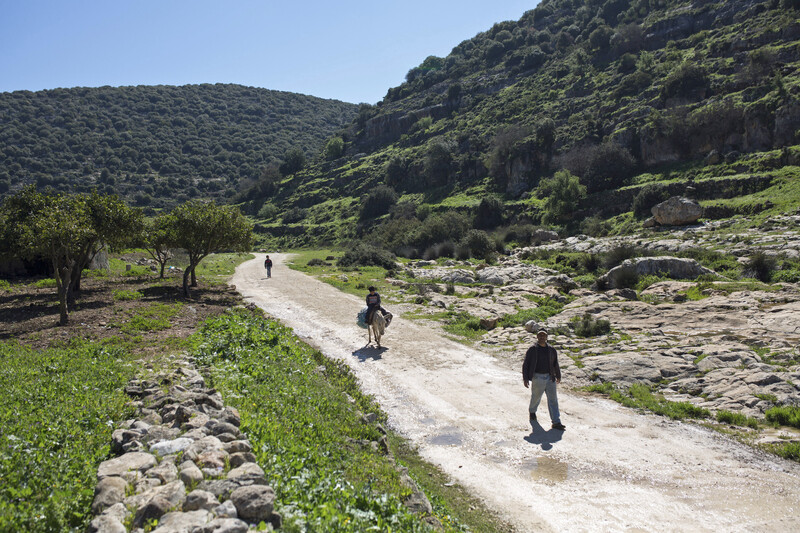
A Palestinian farmer walks ahead of a child along Wadi Qana’s main dirt road.
Palestinians can access the valley from its main eastern entrance or from another entrance in the extreme west. Israeli settlements located on nearby hills, however, are given easy access to the valley via special tracks or paved routes intended for Israeli citizens.
Currently, only a few Palestinian families live in Wadi Qana. More than 10,000 settlers live in the surrounding settlements and outposts located on the hills of the valley.
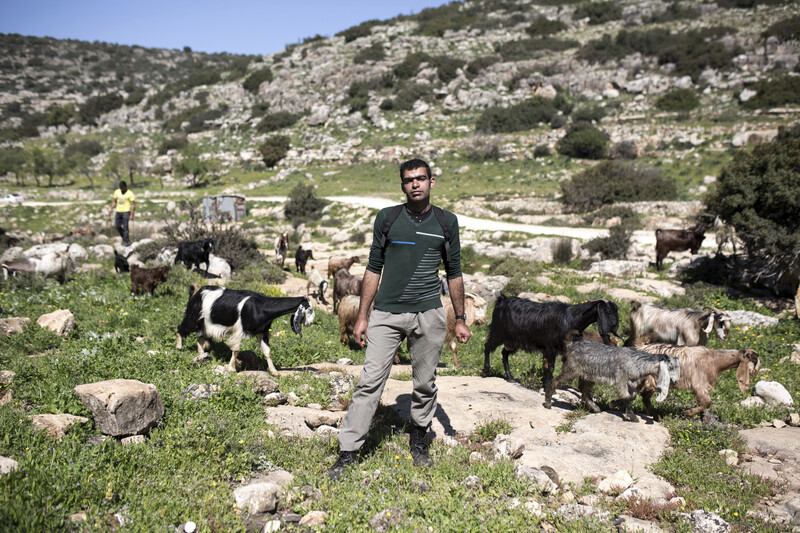
“In the long term, I think they will close the valley to us,” said Kifah Zeadan, 26.
“There is no opportunity for us apart from this [shepherding]. They told us that we are changing nature, but what about the settlers? They always build, and even recently they built a bike path for them.”
Kifah and his family have around 300 goats and sheep. He spends most of his time in the valley and usually sleeps there with his brother Mahmoud, 22, while his family lives in Deir Istiya.
Two days before the photo above was taken, Kifah said that Israeli guards from the nature reserve came and told them they could not sleep in the valley any longer.

An Israeli sign marks the main entrance to Wadi Qana.
Israeli settlers organize regular visits to the valley and occasionally cause problems with Palestinian villagers. The two groups, however, generally prefer not to interact with each other.
On some Jewish holidays and festivals, the Israeli army blocks the main entrance to the area beginning in the early morning hours and allows access only to Israelis.

Al-Tanour spring in Wadi Qana is overlooked by an Israeli settlement rising in the background.
Qassem Mansour, a 66-year-old farmer, indicates that one of the main problems in the area is securing sufficient water for agricultural work.
“We use the springs, but we have noticed a decrease in the quantity, and Israelis prevent us from making any sub-channels from the springs to our lands,” he told The Electronic Intifada.
According to Israeli human rights group B’Tselem, the wadi’s springs have been damaged by Israeli drilling since the 1970s.
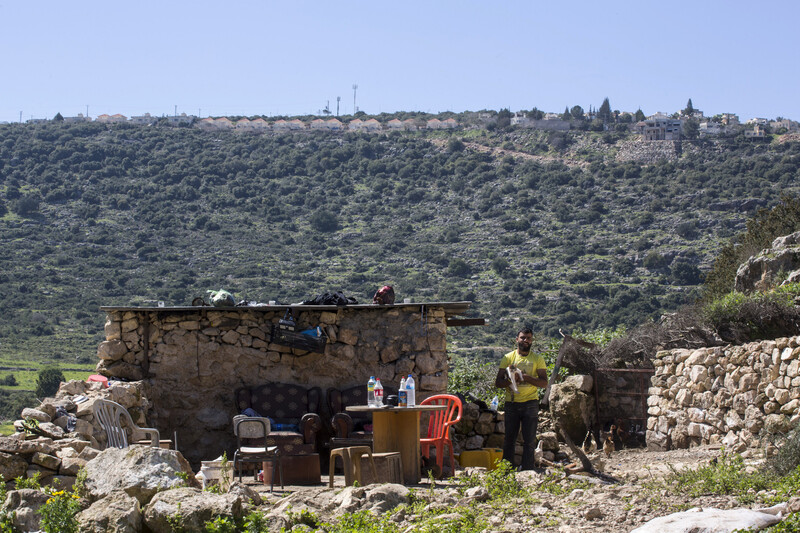
Mahmoud Zeadan, 22, stands in front of the small farm house he stays in with his brother Kifah. In the background is the Israeli settlement of Nofim. He is holding a cat that, according to Kifah, was classified as “illegal” in the area by Israeli nature reserve guards.
Israel has ordered the demolition of the house, claiming it was built without the necessary permits.
Palestinians find it almost impossible to obtain building permits in Area C, the 60 percent of the occupied West Bank that remains under full Israeli military control more than 20 years after the Oslo accords were signed.
Israeli forces previously demolished a house at the same location in February 2018.
Despite the many hardships caused by the occupation, Mahmoud is happy here.
“I love this life. What’s better than to be in a quiet place?”

Settlers cycle towards the unauthorized settlement of Alonei Shilo via a dirt path used by Israelis.
Palestinian farmers say they are not allowed to use these routes as they only lead to fenced Israeli settlements.
The official Israeli narrative asserts that the settlers’ housing units are being built right at the edge of the nature reserve to avoid any change within the valley. This claim is contradicted by B’Tselem, which has found that some 100 settlement housing units in the area were built within the reserve itself.
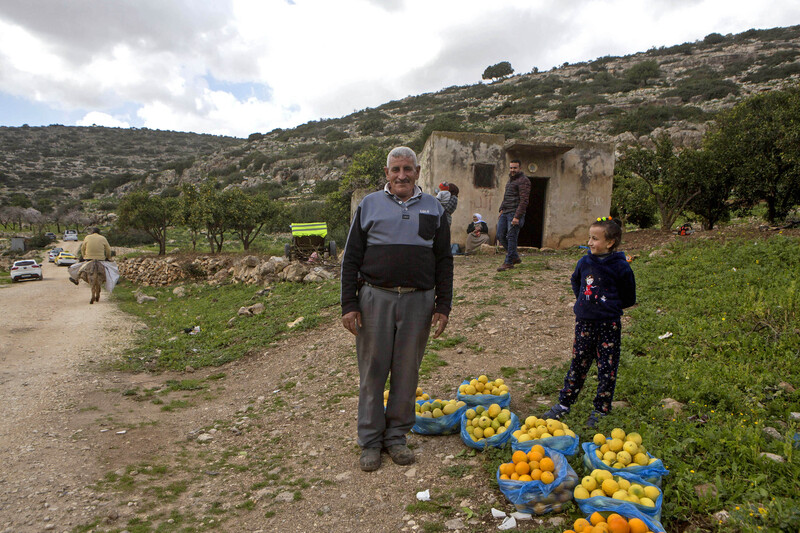
“We used to farm many kinds of vegetables: eggplant, zucchini and tomatoes, but the wild boar became a big problem so we had to stop in 2000 and now we only have lemon and orange trees,” Salah Mansour, 54, told The Electronic Intifada.
“We earn much less money than before … All day I am here, but this is not for profit. It’s just to keep a presence on the land.”
Mansour was born in the valley, started farming at an early age and lived there until the early 1990s. He works with citrus fruits and mostly sells his produce in the valley and at its main entrance. In 2009, Israeli forces uprooted 200 of his olive trees.
This is not unusual.
Saed Zeadan told The Electronic Intifada that Israeli forces uprooted around 2,000 trees between 2010 and 2019 for “being planted in a nature reserve area.”
“I am asking: Why are the trees a problem? It’s nature! And those, they are not a problem?” Mansour exclaimed, pointing his finger to the Israeli settlements.
He has managed, with the help of a lawyer, to freeze orders to uproot more of his trees.
“I cannot imagine my life without this valley,” Mansour said.
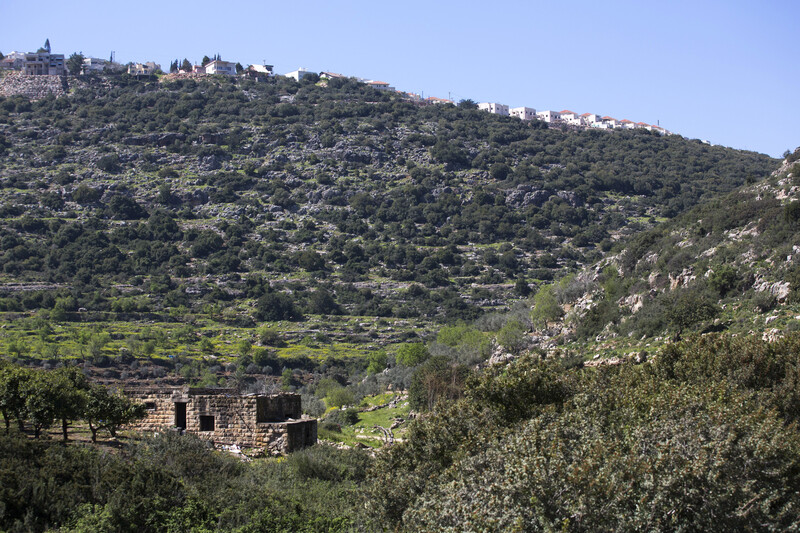
A Palestinian farm house can be seen at the bottom of the valley, and the Israeli settlement of Nofim can be seen at the top.
While Palestinians have only a handful of farm houses in the valley, the location is surrounded by thousands of Israeli housing units. There are currently at least five settlements (Immanuel, Karnei Shomron and Maale Shomron to the north, Yaqir and Nofim to the south) and three outposts (Alonei Shilo, El Matan and Yair Farm) surrounding and overlooking Wadi Qana.
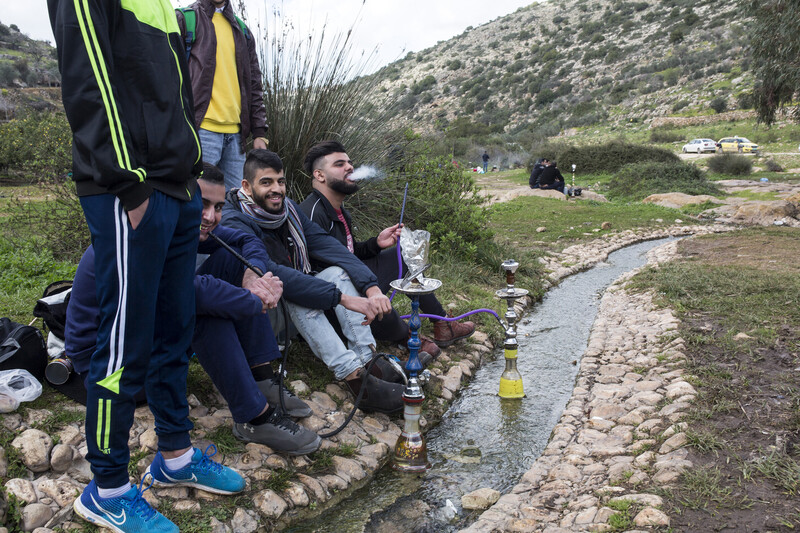
Palestinian young men smoke shisha at al-Bassa stream in the heart of Wadi Qana.
The valley is a popular destination for Palestinian families during spring and summer, especially on weekends. Such visits are fun, but are also a means for people from Deir Istiya to show a Palestinian presence and attachment to the valley.
Local farmers often criticize Palestinian visitors for not preserving the cleanliness of the area and leaving plastic items and garbage behind while they often face no similar problems with Israeli visitors – though constant expansion and sewage from settlements remain serious concerns.
Council head Saed Zeadan says the municipality regularly sends vehicles to collect garbage at the picnic area.
“On Fridays, maybe you will see around 2,000 people who go there to enjoy and relax,” Zeadan said.
“We are in love with this place. We were born there. This is where I learned to swim some 20 years ago. This is the lung from which we breathe.”
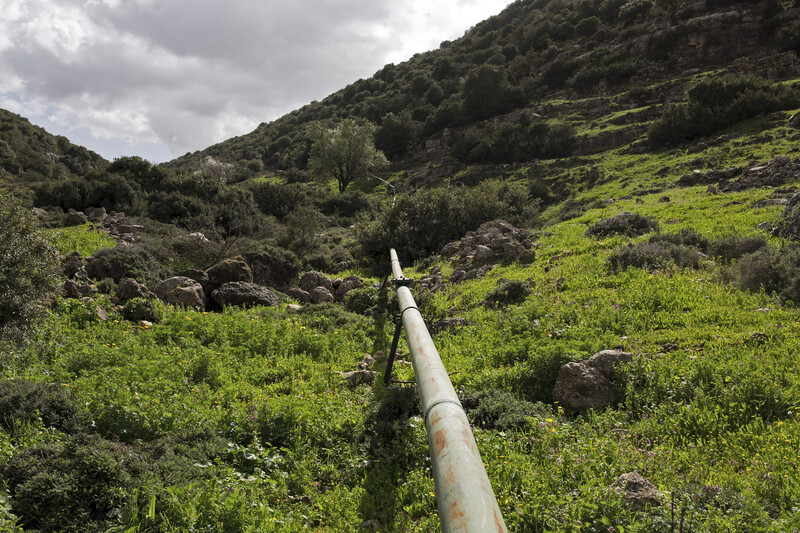
This Israeli drainage pipe runs through Wadi Qana, according to the villagers. For approximately 20 years, the sewage from nearby settlements flooded the valley and caused profound damage to the local ecosystem.
“Settlements continued to release wastewater into the wadi until 2006, when the recognized settlements were connected to sewage infrastructure and the level of pollution was reduced,” B’Tselem found in a 2015 report.
Recurring blockages in the sewage system of the settlements of Nofim and Yaqir still result in occasional pollution of the stream’s water. Moreover, the settlement sewage network sometimes overflows, especially in winter, says Zeadan.
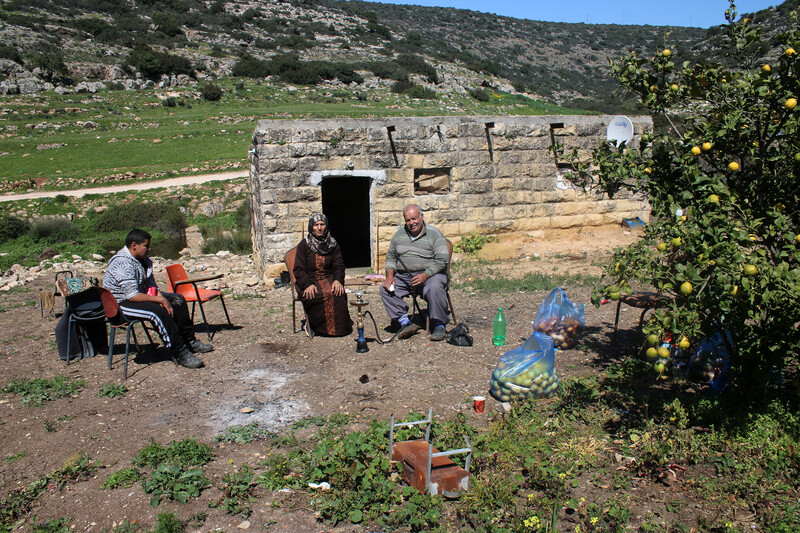
“We love the life here. There is nothing better than staying where your income comes from, and farming is our only source of income, so I should enjoy it. We just go back to the village one or two times a week,” said Amneh Mansour, 49.
The family cultivates onions and lemons trees as well as fava beans.
With her husband, Jihad Mansour, 56 (right), and their son, they have been living in the Wadi Qana valley for the last nine years in a farm house. They drink directly from the nearby spring. They rent the farm house and the land from an owner in Deir Istiya.
The family says they can’t make any changes to the house, such as putting in windows or making other improvements.
“The army comes with drones and they watch everything,” Jihad asserted.
When Palestinian farmers try to improve some of the structures they have built, such as small stone homes or animal shelters, they are at risk of seeing them demolished by Israeli forces. In contrast to the restrictions imposed on Palestinians, Israeli settlers face few obstacles to their activities and development plans in the area.
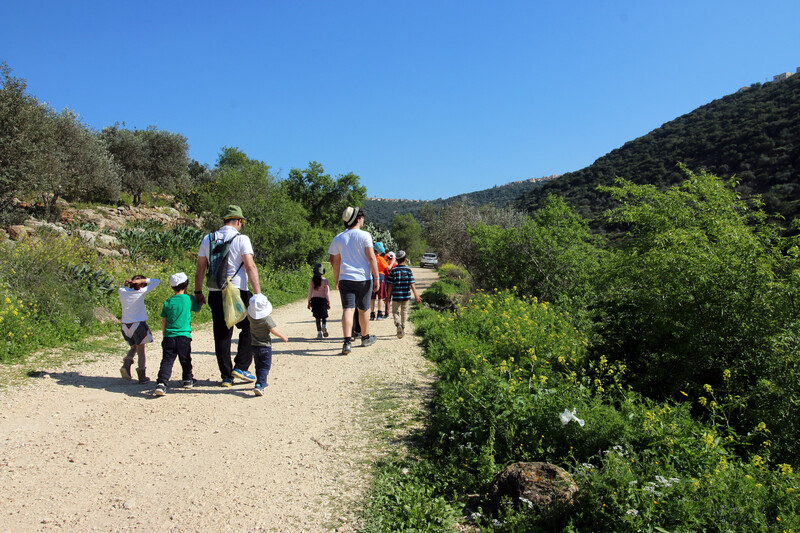
Israelis walk through Wadi Qana.
A 2014 UN report indicates that two surrounding Israeli settlements, El Matan and Alonei Shilo, are regarded as “unauthorized outposts” even under Israeli law. The UN puts the number of encircling settlements at 10 rather than the five reported elsewhere.
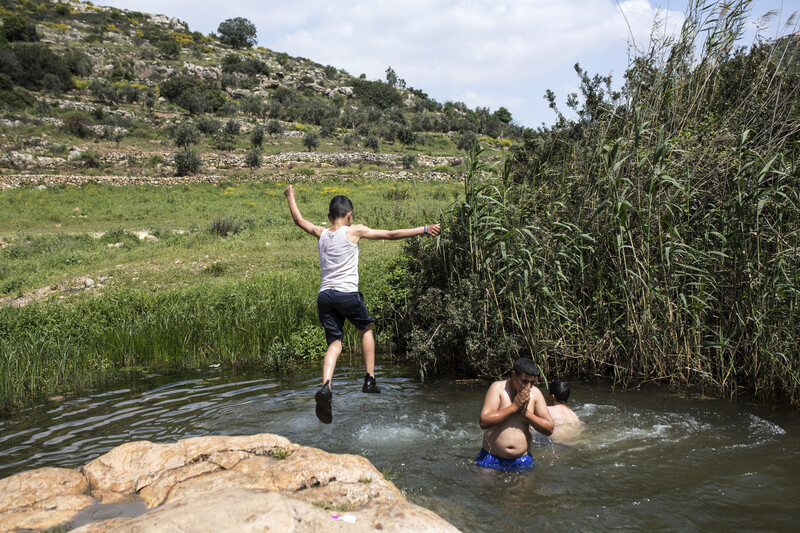
Palestinian youths swim in one of the valley’s pools.
For the residents of Deir Istiya who own most of the land in the eastern part of Wadi Qana, the area is the villagers’ main recreational destination.
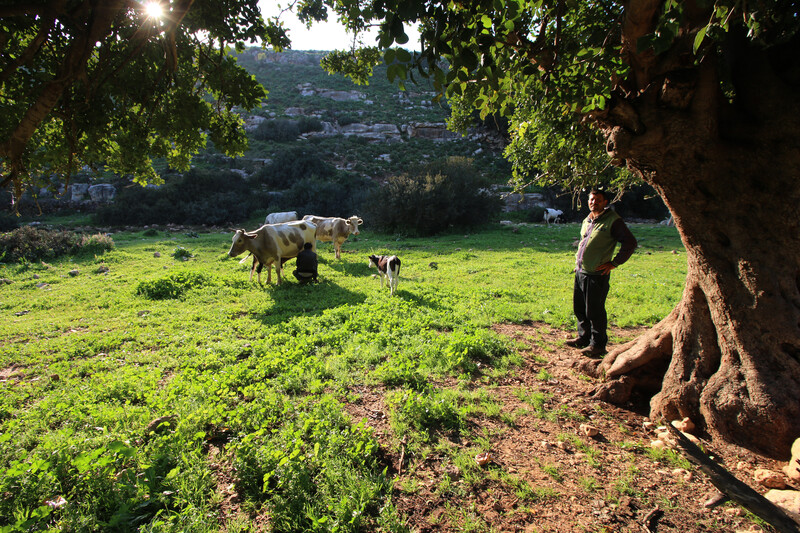
Palestinian farmer Said Odeh and his son graze their cows in Wadi Qana.
“In the first intifada, I was arrested and blacklisted so I don’t have a choice but to work with cows,” he said.
Odeh says he was attacked by settlers from Yitzhar last year who harassed him while they danced amid Israeli flags.
He lives in the nearby hamlet of Arab al-Khouli and asserts that many residents have left because of the harsh living conditions and repeated demolitions.
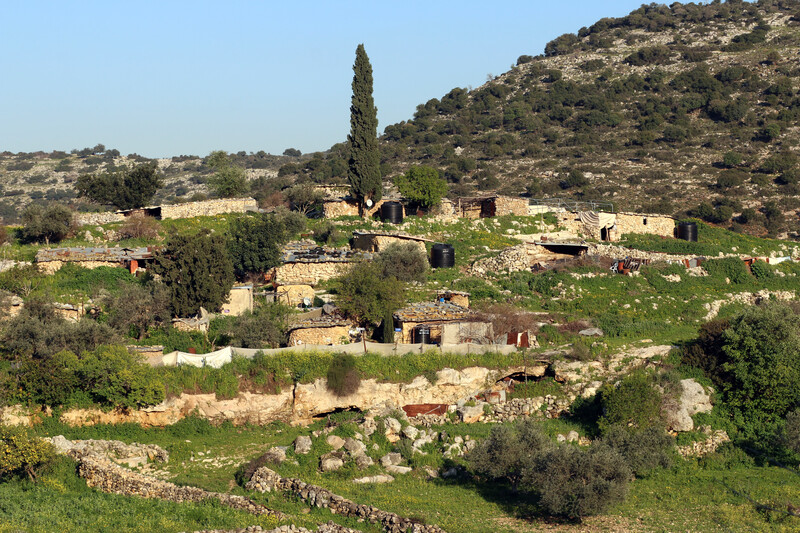
Arab al-Khouli is the only Palestinian community left in Wadi Qana. According to the UN, it has about 85 residents.
Palestinians have inhabited the area since long prior to Israel’s occupation of the West Bank in 1967. Today, residents are careful to make no changes to their residences in order to avoid the threat of demolitions.
There is an adjacent paved road which connects two Israeli settlements, but Palestinians say they are prohibited from accessing that road with their vehicles. The Palestinians living in Arab al-Khouli are not connected to any water or electricity network.


